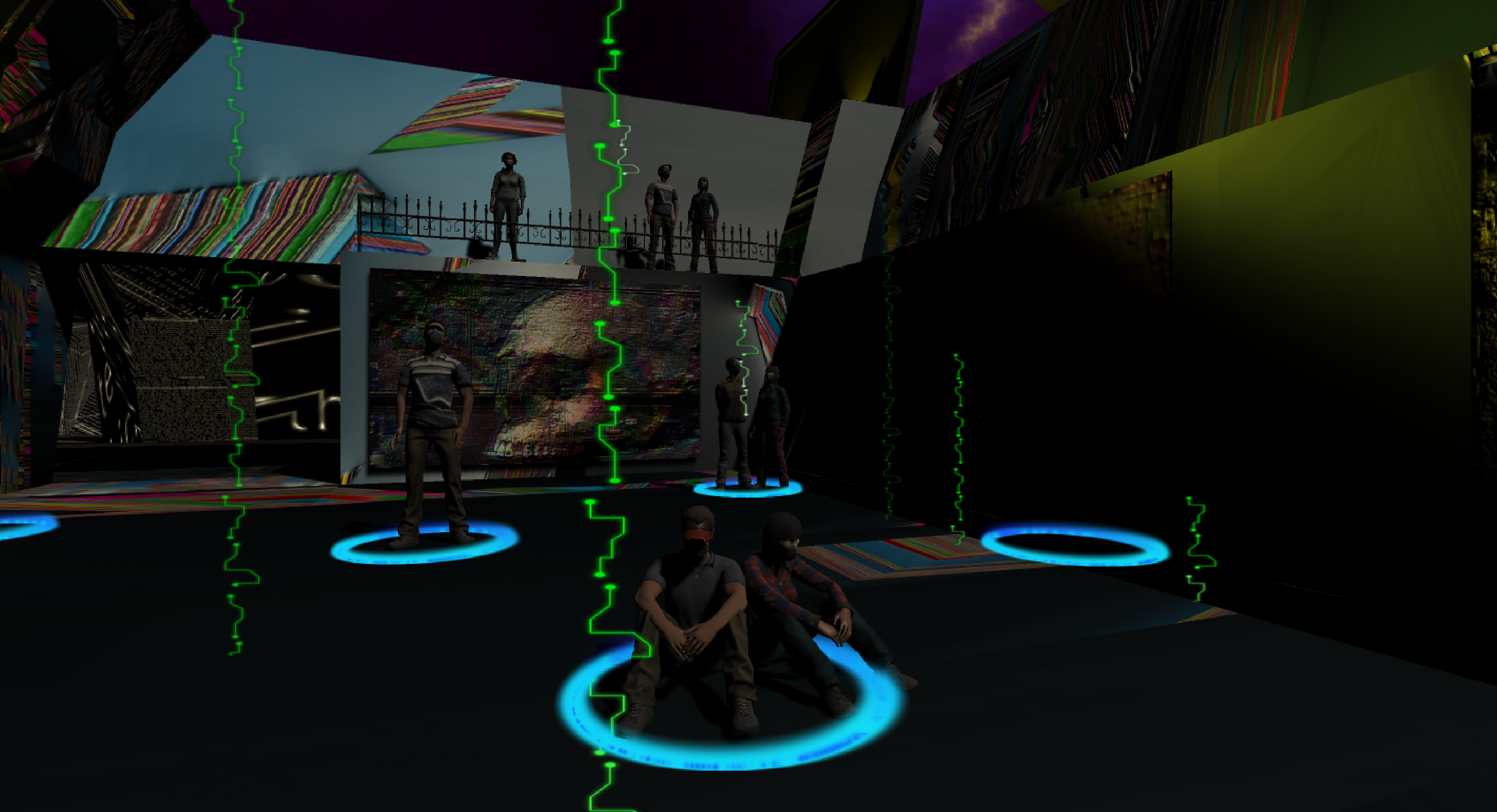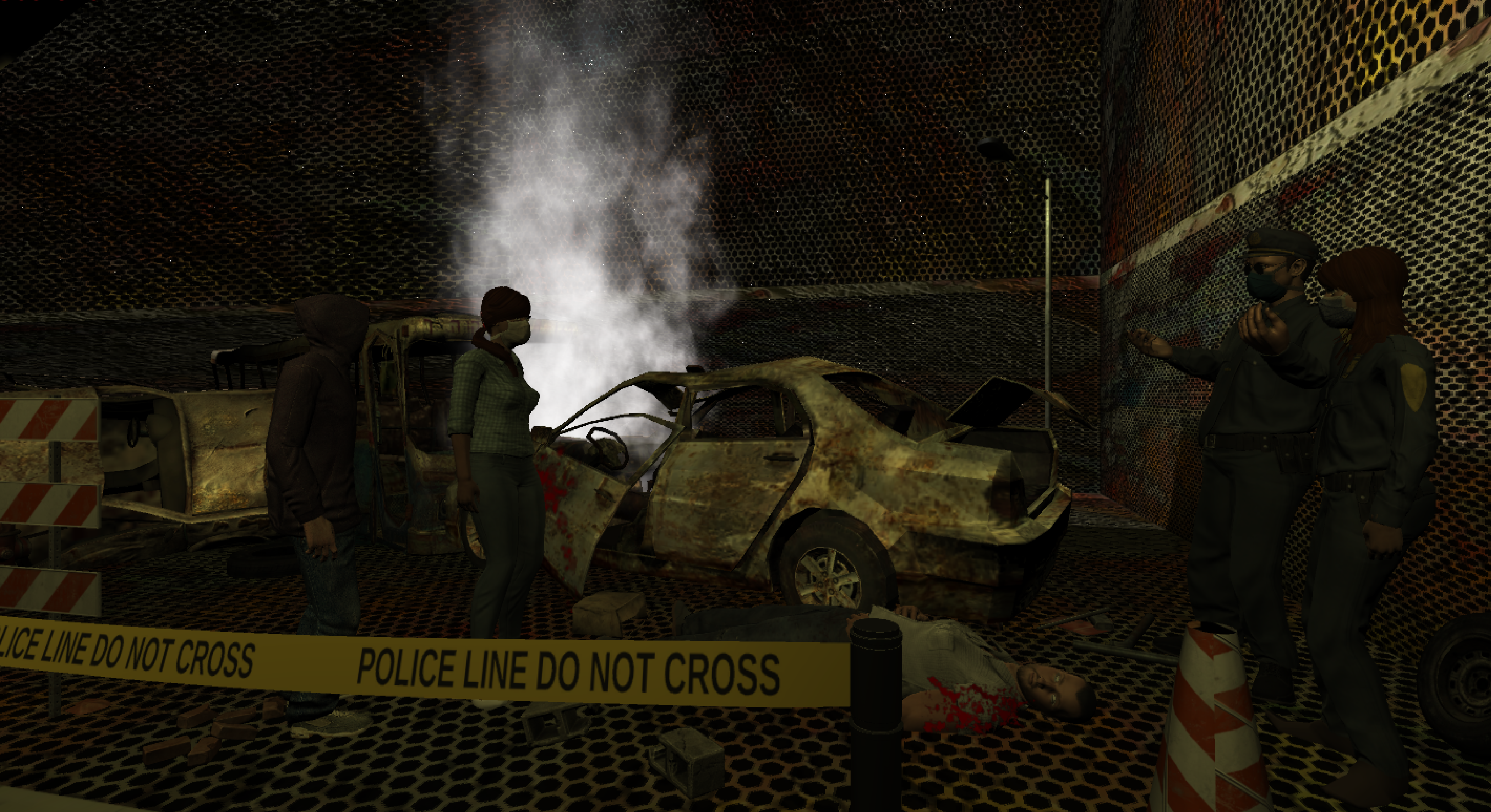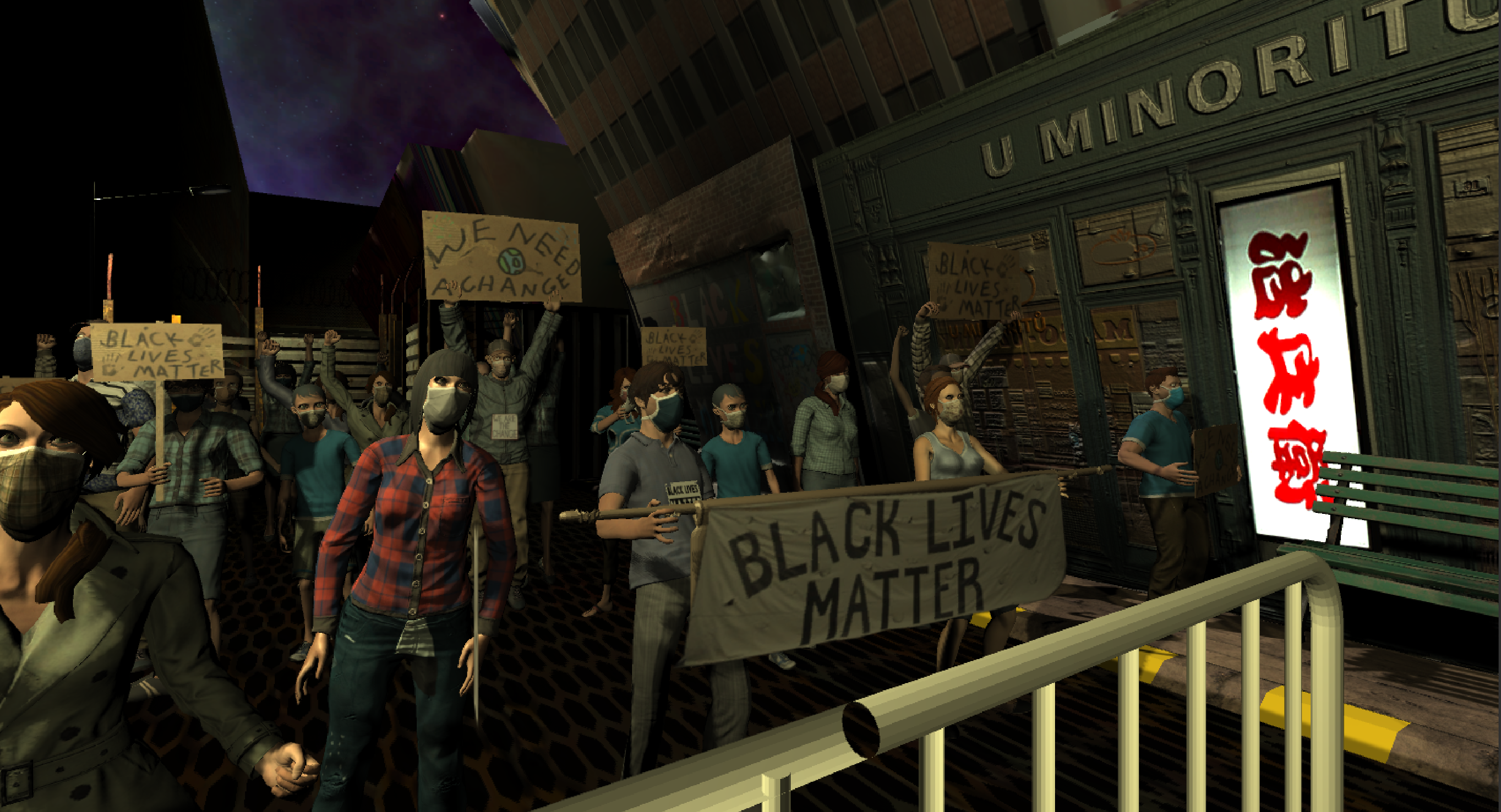The Other: A Maze™
Unique VR Experience where Videogame Meets Social Justice!
The Other: A Maze™ is a unique VR experience where you can immerse yourself in a surreal maze populated by annoying contemporary distractions (it's like walking through the Internet!) and thoughtful Others!
The Other: A Maze is a virtual-reality experience—a kind of video game environment for young adults—created by Joey Bargsten (Professor of Interactive Multimedia, Florida Atlantic University) with the help of writer Thea Zimmer, as well as notable scholars of social justice, inclusion, equity, and diversity. Inside The Other: A Maze (or TOAM), participants or players of the game must make their way through disorienting social media overloads, Covid outbreaks, dehumanizing telephone help-desk bots, consumerism “assaulting” them at every corner, and more.

Throughout the maze, players will be offered opportunities to meet up with The Guides—representing The Other —and hear their stories up close and personal (as 2D video holograms they encounter in this 3D space). These Guides will include members of some of the most marginalized communities, such as Muslim-Americans, “Dreamers” (families impacted by DACA repeals), LGBTQ+ youth, other bullied or misunderstood young people, young Black males and other inner-city, urban adults who still feel left behind or profiled, the homeless, immigrants, and others. The Guides’ stories are nonfictional—based on interviews, questionnaires and research into particular groups or subcultures. Some "Others" will present their perspectives from their own first-person experience.
"I really wanted to make an environment, a safe-zone, for Others to tell their stories," says Bargsten, in describing his VR maze as a surreal environment that reflects and documents what it’s like to live in our modern world of unrelenting distractions, with no time to listen to others—especially those outside one’s “cocoon,” “subculture,” or “echo chamber”—and how this relates to the alienation and sense of “otherness” many of us feel today.
In blending documentary and video game, The Other: a Maze attempts to promote the positive and enriching aspects of multiple subcultures, as well as the commonalities among all people.
With prior support from the College, five Guides have already been filmed, representing Muslim-Americans, young black men, and the transgender community. These Others will be incorporated in the current prototype; additional Others will be added later in a future full version of the game, contingent on the next round of funding.

[PREVIOUS VERSION]The Other: A Maze™ (TOAM) is an interactive virtual-reality experience that takes the form of a fun and socially conscious videogame. Joey Bargsten and writer Thea Zimmer have designed this surreal VR maze to reflect what it’s like to live in our modern world of unrelenting distractions, with little time to listen—especially to those outside of one’s own “echo chamber.” In documentary style, Bargsten and Zimmer give voice to various “Others” within the maze whose narratives will reinforce the non-stereotypical, positive, and enriching aspects of various subcultures within the US, as well as the commonalities among all people. The maze’s Others will include arguably some of the most marginalized—i.e., Muslim-Americans, “Dreamers” (families impacted by DACA repeals), immigrants and refugees, members of the LGBTQ community, inner-city urban young adults, the homeless, and the elderly.
The Others’ narratives are based on interviews, questionnaires and extensive research that Bargsten and Zimmer have gathered from leaders, scholars, and activists in the subcultures represented. Bargsten and Zimmer are artists, not sociologists nor politicians, so they also consider their participating spokespeople to be additional consultants—asking them to incorporate their own thoughts and experiences so each can make his or her representation as personal as possible.
Inside TOAM, participants make their way through disorienting Twitter overloads, dehumanizing telephone-bots, rampant consumerism, and other contemporary distractions (like, um, the Covid-19 virus) — these are called The Snarlies. While wandering and navigating the maze, players will meet up with friendly Others (or Guides) who offer them their own experiences and perspectives as well as information about their subculture unfamiliar to many players. The Others encourage users to do their own research as well, stressing the importance of truth versus propaganda.

Target Audience
Young people are the main target audience, as they will likely feel the most affinity with its videogame environment and new possibilities of the technology. Consultation with project advisors and feedback from demos will help identify the best age range for the project. Adults of all ages should also enjoy the friendly environment, the weird design, and the advanced technology of the maze.
Emerging Technologies and Projected Outcome
The Other: A Maze™ is currently being developed as virtual-reality experience for display in VR headsets (including HTC Vive and Oculus Rift and Quest). Once the prototype is fully developed, research of adaptation to AR or spatial computing environments will impact a broader audience across the spectrum of available platforms, including Microsoft Hololens and Magic Leap. The project is also very portable/scalable. Each Other has been (or will be) shot in both 360° video and HD allowing flexible remediation to existing and/or emerging media platforms.
The Other: A Maze™ is currently designed in the Unity 3D game engine, with preliminary 3D work created in Maya. Both software are industry standards, and both form the foundation of the MFA in Media, Technology, and Entertainment Program at The School of Communication and Multimedia Studies at Florida Atlantic University.

Social Justice
The social impact of this project has multiple layers. Local spokespeople, actors and activists are encouraged to participate in this project that recognizes some of the social challenges of their own “demographic.” The most obvious social impact is that urban—and rural—schools, exhibitions and venues will have access to this game that brings them up close and personal with people that they may know very little about. The Others will speak of the challenges of their subculture in a friendly non-pedantic, non-accusatory way. Even those familiar with a particular demographic may not know some pertinent facts that Bargsten and Zimmer have obtained through their extensive (and fully cited) research. For an overview of issues examined with citation of the sources, click here.